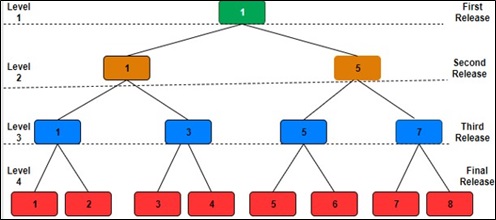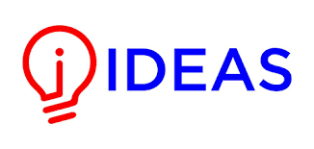Requirements Prioritization- Modeling Through Dependency and Usability with Fusion of Artificial Intelligence Technique
Keywords:
Artificial Intelligence, Requirements, Prioritization, Minimax, Optimization.Abstract
Requirements Prioritization is a crucial part of Requirements Engineering which helps to prioritize the customer’s requirements according to his needs and priorities. This prioritization describes which requirements should be addressed first and which can be addressed later in the software development process. Researchers have suggested many methods and techniques of requirements prioritization. However, there is no comprehensive technique that can be used for all sizes of software projects. This research paper includes an overview of the concept of requirements prioritization, the most common techniques used to prioritize the requirements, and their comparison. Based on based on this comparison, a new requirements prioritization technique is presented in this paper which can be used for every size of a software project. This technique aims to provide the solution to many issues of previous techniques especially dependencies of requirements, user involvement as well as designers involvement. The results demonstrated that the RP model outperforms traditional techniques, particularly in agile development environments, by providing a more efficient and flexible prioritization process. The involvement of designers in requirements prioritization and handling of requirements dependencies reduces the efforts required in the design process.
References
J. A. Ouellette and W. Wood, “Habit and Intention in Everyday Life: The Multiple Processes by Which Past Behavior Predicts Future Behavior,” Psychol. Bull., vol. 124, no. 1, pp. 54–74, 1998, doi: 10.1037/0033-2909.124.1.54.
A. Sapunkov and T. Afanasieva, “Software for automation of user requirements prioritization,” ACM Int. Conf. Proceeding Ser., vol. Part F148261, pp. 1–5, 2019, doi: 10.1145/3318236.3318251.
“Issues with Requirements Prioritization in MDRE.” Accessed: Sep. 26, 2024. [Online]. Available: https://www.researchgate.net/publication/330533422_Issues_with_Requirements_Prioritization_in_MDRE
H. Tufail, I. Qasim, M. F. Masood, S. Tanvir, and W. H. Butt, “Towards the selection of Optimum Requirements Prioritization Technique: A Comparative Analysis,” 5th Int. Conf. Inf. Manag. ICIM 2019, pp. 227–231, May 2019, doi: 10.1109/INFOMAN.2019.8714709.
M. Abbas, I. Inayat, M. Saadatmand, and N. Jan, “Requirements dependencies-based test case prioritization for extra-functional properties,” Proc. - 2019 IEEE 12th Int. Conf. Softw. Testing, Verif. Valid. Work. ICSTW 2019, pp. 159–163, Apr. 2019, doi: 10.1109/ICSTW.2019.00045.
K. K. Adhim1, A. Hudaib2, and B. Al-Shboul3, “EFFICIENT REQUIREMENT PRIORITIZATION BASED ON ENHANCED MULTI-VERSE OPTIMIZER,” J. Theor. Appl. Inf. Technol., vol. 15, p. 19, 2019, Accessed: Sep. 26, 2024. [Online]. Available: www.jatit.org
S. Stumpf et al., “Predicting User Tasks: I Know What You’re Doing!,” 2005.
H. Ahuja, Sujata, and U. Batra, “Performance Enhancement in Requirement Prioritization by Using Least-Squares-Based Random Genetic Algorithm,” Stud. Comput. Intell., vol. 713, pp. 251–263, 2018, doi: 10.1007/978-981-10-4555-4_17.
A. Alzaqebah, R. Masadeh, and A. Hudaib, “Whale optimization algorithm for requirements prioritization,” 2018 9th Int. Conf. Inf. Commun. Syst. ICICS 2018, vol. 2018-January, pp. 84–89, May 2018, doi: 10.1109/IACS.2018.8355446.
A. Leshob, P. Hadaya, and L. Renard, “Software Requirements Prioritization with the Goal-Oriented Requirement Language,” Lect. Notes Data Eng. Commun. Technol., vol. 41, pp. 187–198, 2020, doi: 10.1007/978-3-030-34986-8_13.
M. A. A. Elsood, H. A. Hefny, and E. S. Nasr, “A goal-based technique for requirements prioritization,” 2014 9th Int. Conf. Informatics Syst. INFOS 2014, pp. SW18–SW24, Feb. 2015, doi: 10.1109/INFOS.2014.7036697.
M. Tauqeer, S. Aslam, I. Rafique, T. Rana, and H. Jamil, “Textual vs Visual Representation- Role of Aesthetics in Human Cognition and Perception,” Innov. Comput. Rev., vol. 3, no. 2, p. 2023, Dec. 2023, doi: 10.32350/ICR.32.04.
V. Clay, P. König, and S. König, “Eye tracking in virtual reality,” J. Eye Mov. Res., vol. 12, no. 1, Apr. 2019, doi: 10.16910/JEMR.12.1.3.
A. Hudaib, R. Masadeh, M. H. Qasem, and A. Alzaqebah, “Requirements Prioritization Techniques Comparison,” Mod. Appl. Sci., vol. 12, no. 2, p. p62, Jan. 2018, doi: 10.5539/MAS.V12N2P62.
R. Masadeh, A. Alzaqebah, and A. Hudaib, “Grey Wolf Algorithm for Requirements Prioritization,” Mod. Appl. Sci., vol. 12, no. 2, p. p54, Jan. 2018, doi: 10.5539/MAS.V12N2P54.
M. Tauqeer, S. Rubab, R. A. Naqvi, and K. Javed, “Driver’s emotion and behavior classification system based on Internet of Things and deep learning for Advanced Driver Assistance System (ADAS),” Comput. Commun., vol. 194, pp. 258–267, Oct. 2022, doi: 10.1016/J.COMCOM.2022.07.031.
A. M. Soccini, “Gaze estimation based on head movements in virtual reality applications using deep learning,” Proc. - IEEE Virtual Real., pp. 413–414, Apr. 2017, doi: 10.1109/VR.2017.7892352.
Q. V. Adiwardana, D., Luong, M.-T., So, D. R., Hall, J., Fiedel, N., Thoppilan, R., Yang, Z., Kulshreshtha, A., Nemade, G., Lu, Y., Le, “Advancing a conversational AI that mimics human interaction,” 2020.
T. B. Brown et al., “Language Models are Few-Shot Learners,” Adv. Neural Inf. Process. Syst., vol. 2020-December, May 2020, Accessed: Oct. 01, 2023. [Online]. Available: https://arxiv.org/abs/2005.14165v4
“Rehber: Bubble Sort algoritması ile sıralama | Technopat Sosyal.” Accessed: Jan. 25, 2025. [Online]. Available: https://www.technopat.net/sosyal/konu/bubble-sort-algoritmasi-ile-siralama.1299566/

Downloads
Published
How to Cite
Issue
Section
License
Copyright (c) 2024 50sea

This work is licensed under a Creative Commons Attribution 4.0 International License.




















